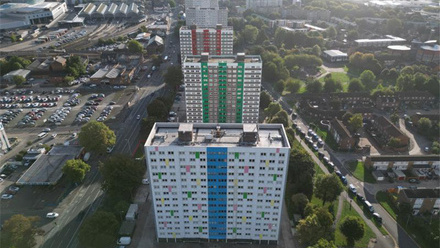Golden thread guidance to be published by BSA
Maintaining a golden thread is a requirement of Part 3 and Part 4 of the Building Safety Act (Part 4 covering 'accountable persons' duties) which came into force in January 2024 in England. It will need to be in place for both new and existing buildings.
Anthony Taylor, chair of the Building Safety Alliance which was set up to raise competence and provide guidance for all those engaged across the occupied residential sector, said:
I think landlords have been struggling with the idea of the golden thread – there has been a lot of misinformation out there and many looking to jump on the commercial bandwagon.
What we are hoping to do is provide pragmatic and practical guidance on the level of detail of the verification process while gathering information in existing buildings that meets legal requirements. We want to bring clarity to the building risk assessment process, which is currently also causing a great deal of confusion.
The Department for Levelling Up, Housing and Communities (DLUHC) clarified in October 2023 that documents to be included for the golden thread specifically include fire safety information, as well as information relating to structural safety and information required by clients after works undertaken under the competent persons scheme.
The department reinstated that it is not mandating one single IT system for the golden thread. It said:
The government is not proposing the use of a single system, but that information and documents should be able to be transferred electronically to others.
The BSA is also to publish two more sets of guidance:
- BSAS01:2023 – an organisational capability management system standard for managing competence (which the BSI has agreed to turn into a full standard); and
- regarding competence expectations for those specifying, improving and managing high-rise and higher-risk residential buildings.
Taylor said that changes in force under the Building Safety Act were taking landlords in both public and private sectors into new territory.
Adopting these new requirements across their portfolio, including existing stock, requires new approaches to building management, integration of data and skilling up their teams so that they can ensure those they are appointing to undertake building and maintenance are properly competent to do the work.
The work of the BSA sits alongside new building safety related standards in the pipeline to be published in 2024 by BSI. BS EN ISO 19650-6 (health and safety information management) introduces guidance relating to the information management of health and safety information.
BSI will also be formalising Flex 8670 into a full British Standard BS 8670-1 (Building Safety Competence Framework).
Meanwhile, the new PAS 8700 (Modern Methods of Construction) is expected in the coming year.
This article first appeared on Project Safety Journal





